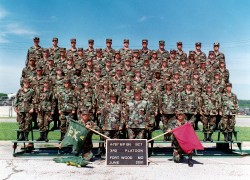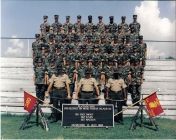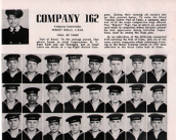Specialty Summary. Performs duties as a mission crew member on unmanned aerospace systems. Employs airborne sensors in manual or computer-assisted modes to actively and/or passively acquire, track, and monitor airborne, maritime and ground objects. Qualified personnel conduct operations and procedures IAW Special Instructions (SPINS), Air Tasking Orders (ATO) and Rules of Engagement (ROE). Crewmembers assist UAS pilots through all phases of employment to include mission planning, flight operations, and debriefings. Continually monitors aircraft and weapons systems status to ensure lethal and non-lethal application of airpower.
Duties and Responsibilities: Conducts reconnaissance and surveillance of potential targets and areas of interest. Detects, analyzes and discriminates between valid and invalid targets using synthetic aperture radar, electro-optical, low-light, and infrared full-motion video imagery, and other active or passive acquisition and tracking systems.
Assists in air navigation, Air Order of Battle (AOB) integration, fire control planning, and determining effective weapons control and delivery tactics to achieve overall mission objectives. Receives target briefs (9-liners) for weapons delivery. Conducts immediate first phase Battle Damage Assessments (BDA) for up-channel coordination and potential reattach. Operator utilizes laser target marking systems to provide target identification and illumination for onboard weapons delivery, and in support of other combat assets. Individual is also responsible for terminal weapons guidance.
Performs pre-flight and in-flight mission planning activities in accordance with unified combatant command and theater rules of engagement. Qualified operator must understand tactics, techniques, and procedures (TTPs) for friendly and enemy AOB assets. They also operate mission planning ancillary equipment to initialize information for download to airborne mission systems. Receives, interprets, extracts, and disseminates relevant ATO, Airspace Control Order (ACO) and SPINs information. Participates in post-flight debriefing to establish mission accomplishments and potential procedural development.
Researches and studies target imagery, friendly and enemy orders of battle, and offensive and defensive capabilities from various sources. Assembles target information, locates forces, and determines hostile intentions and possible tactics.
Conducts initial, qualification, upgrade and continuation training for mission crew members. Individuals perform training, planning, standardization and evaluation, and other staff duty functions. Performs staff assistance visits to subordinate units. Tests and evaluates capabilities of new equipment and propriety of new procedures.
Specialty Qualifications:
Knowledge: Knowledge is mandatory of active and passive airborne sensor systems fundamentals; air weapons control and delivery operations; electro-optical, infrared, and synthetic aperture radar sensor theory; basic imagery interpretation principles; TTPs for detection, recognition, identification and target tracking; TTPs for friendly and enemy AOB assets; UAS control procedures; basic aircraft performance characteristics; Federal Aviation Regulations and Air Force General Flight Rules, airborne sensors and armaments; maintaining publications; emergency action procedures; and ATO, ACO, SPINs, and fire support annexes.
Education. Completion of high school with courses in algebra, geometry, electronics and computer applications is desirable.
Training. The following training is mandatory for award of the AFSC indicated:
1U031. Completion of the basic Sensor Operator course.
Experience. The following experience is mandatory for award of the AFSC indicated:
1U051. Qualification in and possession of AFSC 1U031.
1U071. Qualification in and possession of AFSC 1U051.
1U091. Qualification in and possession of 1U071, and experience in managing Predator Sensor Operations.
Flight experience is considered beneficial and desired, but not required for qualification in this AFSC.
Other. The following are mandatory as indicated: Normal color vision and basic Ground Control Physical qualification for UAS Sensor Operator duty according to AFI 48-123, Medical Examinations and Standards, Attachment 2. This AFSC requires routine access to Top Secret material or similar environment. For award and retention of AFSCs 1U0X1, completion of a current Single Scope Background Investigation (SSBI) according to AFI 31-501, Personnel Security Program Management.
NOTE: Award of the 3-skill level without a completed Single Scope Background Investigation (SSBI) is authorized provided an interim Top Secret security clearance has been granted according to AFI 31-501. For award and retention of AFSC 1U031 ability to keyboard 20 words per minute (wpm).




